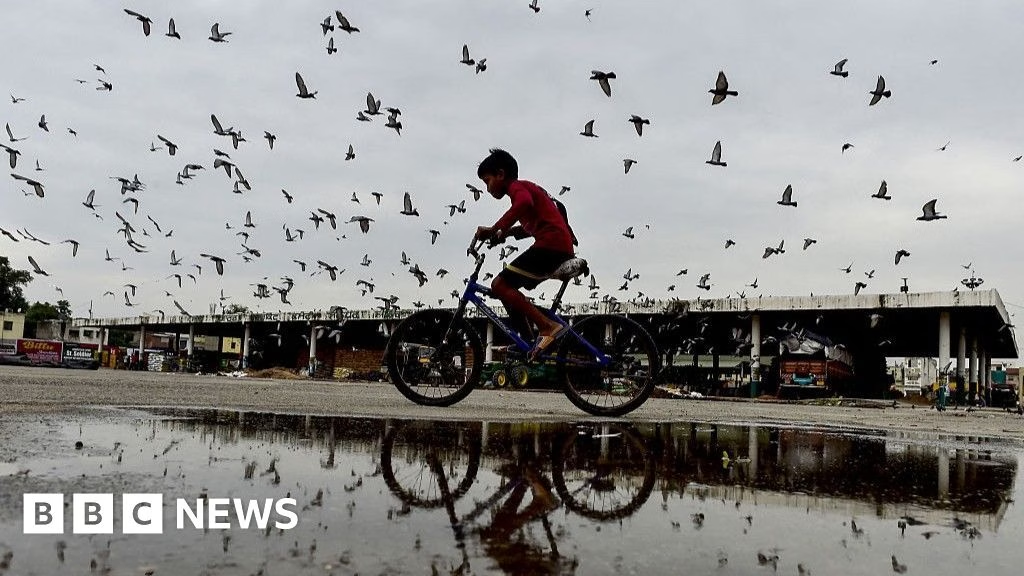<
div id=””>
<
div data-component=”image-block” class=”sc-3b6b161a-0 gyQxwn”>

A recent court ban on feeding pigeons in public spaces in the western Indian city of Mumbai has become a major flashpoint between civic bodies, public health activists and bird lovers.
This month, hundreds of people clashed with police twice while protesting the closure of a decades-old pigeon feeding spot, or a kabutarkhana. (Kabutar is the Hindi word for pigeon.)
Some tore down the tarpaulin sheets covering the spot and threatened an indefinite hunger strike. Police briefly detained about 15 people at another protest, media reports said.
Authorities had imposed the ban due to concerns about health hazards due to pigeon droppings.
The problem is not unique to Mumbai. In Venice, feeding pigeons in historic squares is banned. Singapore imposes hefty fines, and New York and London have regulated feeding zones.
In India too, Pune and Thane cities in Maharashtra state – of which Mumbai is the capital – have imposed penalties on feeding pigeons. Delhi is mulling an advisory against feeding the birds in public spaces.
The crackdown has angered animal lovers and religious feeders, as pigeons are long woven into India’s cultural fabric.
Films often use shots of grain-feeding pigeons to evoke cities like Mumbai and Delhi, where the birds are a familiar presence on balconies and air-conditioners.
Some of Mumbai’s kabutarkhanas are iconic heritage structures and are said to have originated as charitable spaces where communities could donate grain.
There are religious sentiments involved as well. In Mumbai, the Jain community, which considers feeding pigeons a pious duty, has been vocal in their protests.
Elsewhere too, many share a bond with pigeons – seen as symbols of peace and loyalty.
In Delhi, Syed Ismat says he has been feeding the birds for 40 years and considers them his family.
“They are innocent. Perhaps the most innocent of all creatures. All they ask for is a little kindness,” said Mr Ismat.
But these sentiments are pitted against studies which show that prolonged exposure to pigeon droppings poses risks of pulmonary and respiratory illnesses.
A boom in India’s pigeon population in recent years has heightened this risk, prompting the restrictions.
Delhi-based biodiversity expert Faiyaz Khudsar says easy availability of food has led to overpopulation of pigeons in many countries.
In India, he said, the challenge is compounded by a decline in birds like the goraiya, commonly known as the house sparrow, which are increasingly being displaced by pigeons.
“With easy food and no predators, pigeons are breeding faster than ever. They are outcompeting other urban birds, creating an ecological loss,” Mr Khudsar said.
( Rest of the code )
Source: https://www.bbc.com/news/articles/cvg3mj0vkzro?at_medium=RSS&at_campaign=rss








